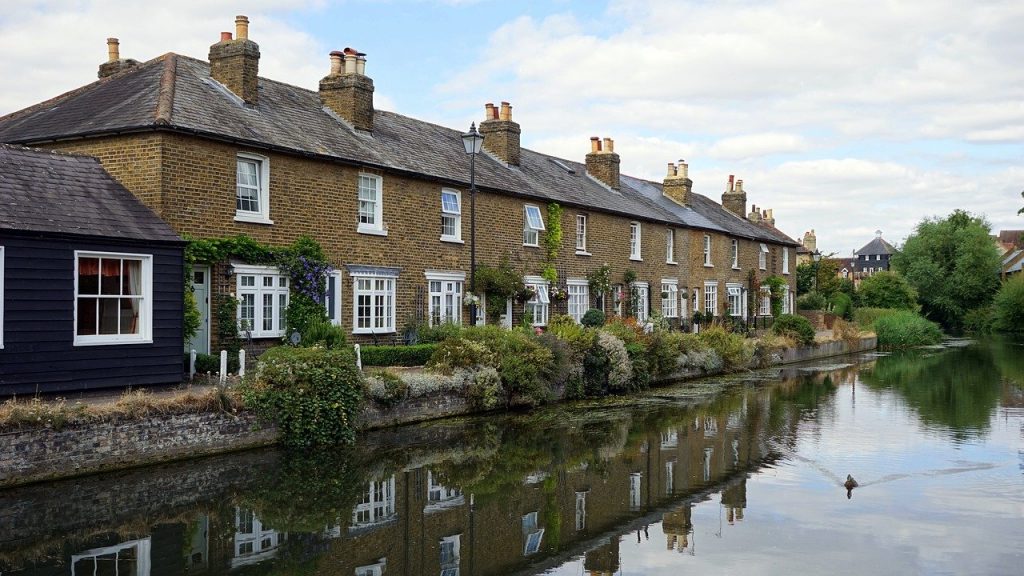Worried about rising energy costs? This comprehensive guide offers you clever and practical ways to save on your energy bills.
The energy crisis is a complex and evolving issue caused by a combination of factors: cold winters, depleting energy supplies as well as sanctions on Russian imports. While renewable energy sources are an important priority and a growing area of interest for the UK government, fossil fuels are still the mainstay source of energy to heat and power our homes. With the energy price cap rising by over 50 percent, it’s never been more important to find innovative ways to raise your home’s energy efficiency and lower its usage.
We offer a guide to help you reduce your household energy bill and push the pence and pounds a little further.
Smart Meter
Chances are you already have a smart meter installed or are on your way to do so, thanks to the Government’s plan to roll them out across the country. However, if your smart meter isn’t yet fitted, you can request one from the smart meters’ website.
The advantage of the smart meter – which includes an in-home display and communication hub – is that it allows you, and your provider, to keep track of your energy usage. Some studies showed that by monitoring their usage, households could reduce their energy consumption by nearly 10 percent during peak demand (while the household is awake).
Smart Thermostat
In many UK households, the cost of heating, especially during the colder months, is responsible for more than half of their monthly energy bills. While many households have some form of smart technology in their homes, such as Amazon Alexa, not all of these are focused specifically on saving energy which is where the smart thermostat comes into play. It allows you to control your heating and cooling remotely so that you no longer have to pay the bill for heating an empty house. One of the most popular, the Hive thermostat, claims to save you around £110 on your energy bill each year.
Boiler/Immersion Timer
It’s as easy to leave the heating on thoughtlessly as it is to warm the boiler for a longer period than strictly necessary. A boiler timer can work with your smart home console, such as a Google Nest, enabling you to time your boiler to start warming half an hour before bath time. Generally speaking, an electric shower is less resource-intensive to run than a bath, so would be the most energy-efficient option for a household: it is also cheaper to install and takes up less room in a house.
Change Your Bulbs
Because LED lights convert most of their energy source into light, instead of heating up unnecessarily, they use over 80 percent less electricity than traditional light bulbs. When you consider that lighting your house accounts for about 10 percent of your electricity bill, LED lighting offers significant savings potential on your electricity costs. In fact, if you replaced all your incandescent or halogen bulbs in your house with LED lights in your house, you’d reduce your carbon dioxide emissions by around 40kgs a year.
Replace your old energy-heavy appliances with ‘greener’ alternatives
Using a modern dryer versus an older or less efficient one can cut the cost of drying your clothes by half. For example, an A++ rated tumble dryer uses less than half the amount of electricity per load compared to a C-rated dryer. The same holds true for fridge freezers. Households can save over £100 a year with a more energy-efficient fridge and freezer.
According to Beko, most condenser tumble dryers display an energy rating of either B or C, whereas heat pump tumble dryers are rated A+ or A++.
Another quick tip for fridges and freezers is to keep them full, even if it’s just with water and ice. A full fridge or freezer loses less cold air and is, therefore, cheaper to keep food cool or frozen.
Be Mindful Of How You Use Your Appliances
Another way to cut down on the cost of drying your clothes, other than hanging them out on the washing line in summer, is to double-spin your clothes. Cold quick washes are also more energy efficient than longer hot washes. The same applies to your dishwasher, where a quick or eco-wash will offer the most household savings. Further to this is to ensure only to run your washing machine and dishwasher with a full load of clothes or dishes. If you have a timer setting on your washer/dryer you can also time it to do the laundry during the time of off-peak electricity tariffs (from midnight to morning). Laundry balls used in the tumble dryer also create space between the items of clothing, allowing heat to circulate more freely and cutting down on your drying time.
British Gas Offers The Following Additional ‘Quick-Saver’ Tips:
- Invest in Hive Plugs. These smart adaptors make it possible for you to turn off appliances at the wall with a single tap on an app. When your appliances or electronics are plugged in but switched off, they are still putting pressure on the energy grid; by turning them off at the wall, you’ll further reduce your electricity costs.
- Don’t Fill Kettles Up. By only heating the amount of water that you need, you can reduce the cost of boiling your kettle by a third, if you usually fill it to the top.
- Use Natural Light and Heat. By opening your curtains to let in the sun’s heat, and closing them at night to retain this heat, you’ll be kinder to the environment and your household utility bill.
- Use a Microwave rather than an Oven. A modern microwave can save on a whopping 80 per cent of the energy used to heat up and run an oven. Enough said.
- Put a Lid on a Pan. Rather an easy way to waste less heat energy is to cover your pans with lids, thereby reducing the amount of lost heat.
Buying A New Home? How The Energy Rating Makes A Difference
A lot like the coloured stickers on the appliances mentioned above, an Energy Performance Certificate tells both the buyer and seller how energy efficient a home is by assigning it a letter from A (most efficient) to G (least efficient). The government has mandated that by 2025, all new tenancies need to show an energy efficiency of at least C. An energy-efficient build makes a huge difference to the consumer’s pocket, however, with a Guardian article surmising that energy-efficient building standards save some households around £1000 per year.
Some of the ways that a house can be upgraded to improve its energy efficiency and thereby its rating include:
- Upgrading from oil to gas central heating
- Hot water tank insulation
- Ensuring adequate loft, underfloor, or cavity wall insulation
- Upgrading to double-glazed windows
If you’re not in the market for an upgrade, even the most basic changes can make a dent.
Try the following:
- Draught proofing: even something as rudimentary as a ‘sausage dog’ draught excluder or wrapping cling film on your windows are proven methods of slicing two percent off your electricity bill.
- Be wise with your heating: Did you know that if you turn your thermostat down by as little as one-degree celsius, you could shave £80 off your bill? Another method to improve the efficiency of your heating is to regularly bleed radiators. This removes trapped air to increase efficiency. Setting a time for your radiators to only be on for an hour at a time will also save energy, as will turning down the temperature on your boiler.
Make Good With Government Discounts
Vulnerable, elderly or low-income houses have several options available to them to make high energy costs more manageable, including:
- Winter Fuel Payment – a £100 to £300 fuel payment for people born on or before 26 September 1955.
- Cold Weather Payment – a £25 payment for every 7 days of very cold weather between November and March.
- Warm Home Discount – a £140 discount for some people getting Pension Credit or some people in low-income households.
- Household Support Fund – a funding package to help vulnerable households this winter. Contact your local council for advice and help on accessing the fund. – Excerpt from gov.uk
For other households, there are also options available including:
Payment plan with your suppliers. You are legally permitted to ask your supplier to
- Review your payments or debts
- Give you payment breaks
- Give you additional time to pay
- Offer you access to hardship funds
The Government Energy Discount scheme is also passing down savings to all households via their suppliers. Learn more here.
Off-the-grid living – is it possible?
Living off the electricity grid in the UK is entirely possible, plausible, and when it comes to the current state of affairs, also fairly practical. A common way to generate electricity independently is by installing solar panels, along with batteries to store the power. However, less commonly people use wind or hydroelectric energy to power their homes. Specifically for solar panels, there are a number of government incentives linked to their installation in a private home, namely:
- Smart export guarantee: sell your surplus power back to the municipality
- 5% VAT reduction on solar panels
- EC04: part of the scheme to update the energy efficiency of all homes in the UK, with incentives or schemes offered to help households install solar panels and take other measures towards greater efficiency








